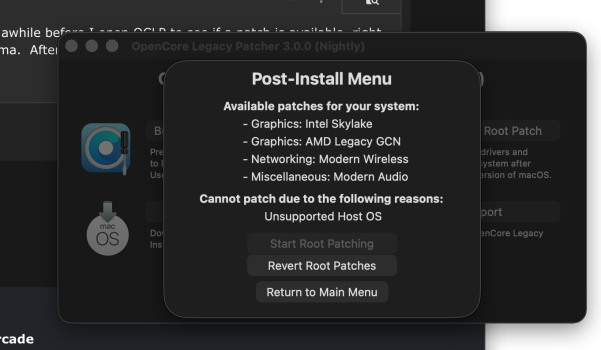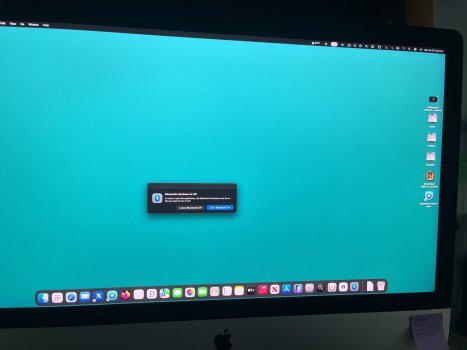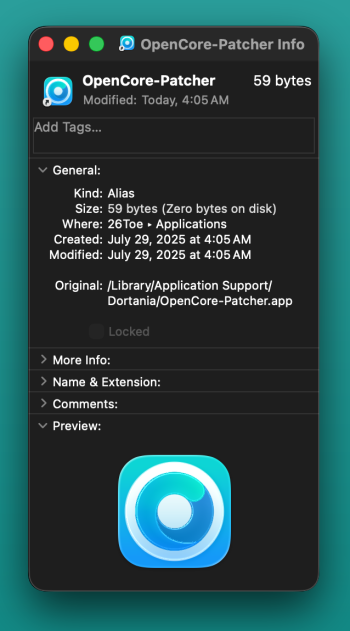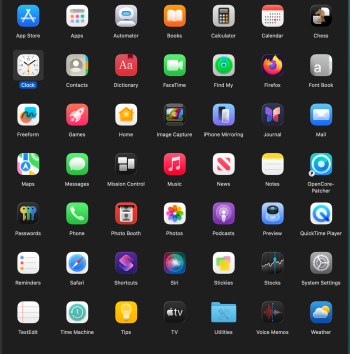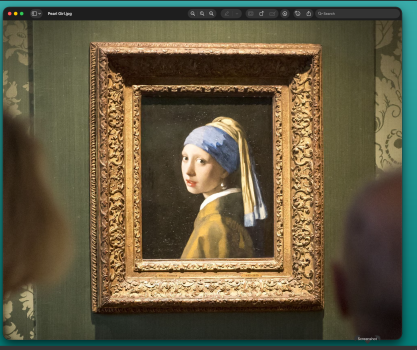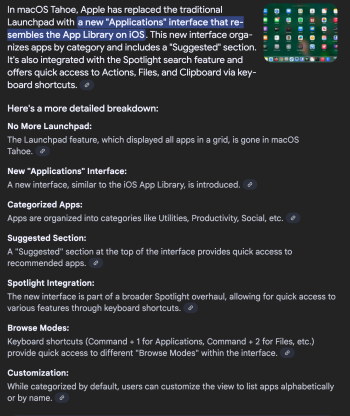Hello to all,
It would be remiss not to acknowledge risks inherent in experimenting with nightly OCLP software, and any warning to that effect should be fully appreciated. However, once risks are understood, and potential fallout is limited to the person’s own, non-mission-critical computer, said experiment becomes an exercise in discovery. The benefits of the latter often far outweigh the fall-out from “misadventure”, notably, when playing in one’s own “sandbox”;
suo periculo doctrine applies.
iMac 13,2 metal capable :
Installed Tahoe 26 beta4 OTA over Tahoe beta3 on an external SSD. Used OCLP nightly 3.0.0 from July 1st. Slow process, but eventually reached the login screen and then desktop; keyboard and trackpad were fully active. There is a significant system overhead, as evidenced by the Activity Monitor, presumably due to “liquid glass” requirements. “Iconserviceagent” takes over CPU cycles, and becomes even more insidious, when a new window is opened and the system attempts to render application icons within. It took a long time before Dock was displayed, but eventually it appeared and was fully functional.
Operationally, while running beta4, when clicking on icon to start an application there is a significant delay, and sometimes process stalls. However, when tapping with two fingers on icon to activate drop-down menu, then choosing “open” command, the target launches relatively fast, and does not stall. This lag improves dramatically when post-install internal processes complete.
What works: Bluetooth and hence keyboard and track pad. Ethernet is fully functional and Internet can be accessed without issues, camera works, LAN is functional via Ethernet. All native applications, which do not require sound input-output or absolute Metal, launch and work as expected. Tahoe 26 beta4 is actually very “snappy” once background processes are completed, however, it does take a while (CPU dependent). Subjectively, some desktop responses appear to be faster than same actions on accelerated Sequoia.
What doesn’t work: there is no “Graphic Acceleration” , no WiFi, no sound input-output. Fusion Drive (an HDD) is not visible on desktop when booted into Tahoe, and Tahoe installer does not recognize (an internal) fusion HD. That “behavior” was also reported by other posters.
MacBooK Pro 5.2 (Non-Metal reference machine) - an external keyboard and mouse, routed through USB hub, were used throughout the process. Ethernet was used for internet and LAN connectivity.
I was previously able to install Tahoe beta 2 onto an internal SSD drive, with very encouraging results (see post #305)
However, Tahoe beta 3 was not installable on either internal or external SSD, no matter the release date of OCLP 3.0.0 used or Sequoia version underlying the process.
Finally, release of Tahoe developer beta 4 made it possible to install Tahoe on both, an internal and external SSDs. Used OCLP 3.0.0 from July 1, 2025, Each drive had Sequoia 15.6 beta4 pre-installed before Tahoe update.
Tahoe Beta4 installer was downloaded from Mr.Macintosh site (or via OCLP function), and extracted onto an internal and external drives, each operating under Sequoia 15.6 beta4. Thereafter, OCLP 3.0.0 nightly (July 1, 2025 version) was installed on both SSD drives, and, in addition, on a USB thumb drive housing an additional Tahoe beta4 installer.
External SSD installation:
Tahoe beta4 installer was launched from a Sequoia 15.6 beta4 volume, on an external SSD, targeting “itself” for update.
Installation took an extended period of time, but did complete, and presented a login window with an active external keyboard and mouse. Past password entry, it took a very long time for fully functional desktop to stabilize and allow applications to be launched.
Internal SSD installation:
Booted from a USB thumb drive and launched installer in usual manner. Again, as with external drive, it took long time to reach login widow, but when reached, both, keyboard and mouse were active, and it was possible to enter password.
It took a very, very long time to reach fully functional desktop, but eventually it was possible to launch applications and access internet, etc.
What works:
Applications launch and are active if, sometimes, at glacial speeds (Note: applications relying on metal support or sound are not fully functional). Ethernet (WAN) and LAN are fully active.
What doesn’t work:
There is no Graphics Acceleration, no Bluetooth or WiFi, and there is no sound input or output (as expected due to lack of patches).
Oddly, OCLP 3.0.0 release from 7.14.25 (macOS-next branch with USB mapping) did not work on my machine; it resulted in failed install due to apparent problems with USB port “enumeration”. See a screen shot of the installation log (attached below).
Not sure of what changed in Tahoe Beta 4 release to allow installation, but it was more forgiving of OCLP intervention than Beta3.
It was encouraging to see positive results achieved by
@hvds,
@deeveedee,
@renton and others, which served as background to the Tahoe installation on legacy non-metal machines. Building OCLP from source does seem to produce versions of OCLP better matched to non-metal machines.
Overall, an encouraging sign of progress thanks to developer teams and this forum’s members.
Hope this entry may be of help.

MacBook Pro 5,2. Tahoe desktop on the internal drive.

MacBook Pro 5,2 Tahoe desktop on external drive

Error codes OCLP 3.0.0 nightly, July 14 build from macOS-next developer branch.


